Magma chambers versus mush zones: constraining the architecture of sub-volcanic plumbing systems from microstructural analysis of crystalline enclaves
- PMID: 30966927
- PMCID: PMC6335489
- DOI: 10.1098/rsta.2018.0006
Magma chambers versus mush zones: constraining the architecture of sub-volcanic plumbing systems from microstructural analysis of crystalline enclaves
Abstract
There are clear microstructural differences between mafic plutonic rocks that formed in a dynamic liquid-rich environment, in which crystals can be moved and re-arranged by magmatic currents, and those in which crystal nucleation and growth are essentially in situ and static. Crystalline enclaves, derived from deep crustal mushy zones and erupted in many volcanic settings, afford a unique opportunity to use the understanding of microstructural development, established from the study of intrusive plutons, to place constraints on the architecture of sub-volcanic systems. Here, we review the relevant microstructural literature, before applying these techniques to interrogate the crystallization environments of enclaves from the Kameni Islands of Santorini and Rábida Volcano in the Galápagos. Crystals in samples of deep-sourced material from both case studies preserve evidence of at least some time spent in a liquid-rich environment. The Kameni enclaves appear to record an early stage of crystallization during which crystals were free to move, with the bulk of crystallization occurring in a static, mushy environment. By contrast, the Rábida enclaves were sourced from an environment in which hydrodynamic sorting and re-arrangement by magmatic currents were common, consistent with a liquid-rich magma chamber. While presently active volcanoes are thought to be underlain by extensive regions rich in crystal mush, these examples preserve robust evidence for the presence of liquid-rich magma chambers in the geological record. This article is part of the Theo Murphy meeting issue 'Magma reservoir architecture and dynamics'.
Keywords: crystal mush; enclave; magma chamber; microstructure.
Conflict of interest statement
We declare we have no competing interests.
Figures
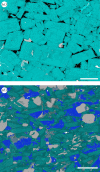


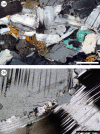
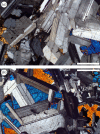



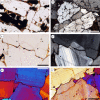
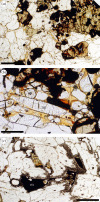
References
-
- Marsh B. 2004. A magmatic mush column rosetta stone: the McMurdo Dry Valleys of Antarctica. Eos Trans. Am. Geophys. Union 85, 497–502. (10.1029/2004EO470001) - DOI
-
- Christopher TE, Blundy J, Cashman K, Cole P, Edmonds M, Smith PJ, Sparks RSJ, Stinton A. 2015. Crustal-scale degassing due to magma system destabilization and magma-gas decoupling at Soufrière Hills Volcano, Montserrat. Geochem. Geophys. Geosyst. 16, 2797–2811. (10.1002/2015GC005791) - DOI
-
- McBirney AR, Noyes RM. 1979. Crystallization and layering of the Skaergaard intrusion. J. Petrol. 20, 487–554. (10.1093/petrology/20.3.487) - DOI
-
- Bachmann O, Bergantz GW. 2004. On the origin of crystal-poor rhyolites: extracted from batholithic crystal mushes. J. Petrol. 45, 1565–1582. (10.1093/petrology/egh019) - DOI
LinkOut - more resources
Full Text Sources

